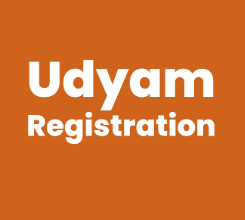5 Ways to Keep Track Of Production With Project Management Gantt Chart

Charting your duties may be thrilling and difficult, regardless of whether your firm is in software or skydiving.
A day can only contain so much time. You must use those precious hours as effectively and profitably as you can. Gantt charts are among the simplest tools you may use to accomplish this. Project and process management is greatly facilitated by project management Gantt charts. They can assist you and your team in minimizing ineffective efforts and maximizing productivity.
What exactly is a Gantt chart?
Gantt charts are bar graphs that display the beginning and ending dates of a project schedule. It lists all of the project’s specific tasks along with their associated due dates. These vibrant charts are a common project management tool because they make scheduling and finishing project tasks simple to visualize.
They also aid in communication with team members who are not involved in the project and verify the work is being done in a logical order.
In project management and business, Gantt charts are used to depict scheduled events as bars. They were frequently utilized during World War I for coordination between the government, military, commercial organizations, and defense contractors. They were given their name after their inventor, Henry Gantt.
Gantt charts use stacked horizontal bars to graphically represent project data. Each task or project start date is indicated by one bar about the others. As a result, it will be simple for you to determine which jobs have been completed and when there won’t be enough time to finish any associated projects or tasks.
It is simpler to see how development occurs on a daily, weekly, and monthly basis. Eliminating unnecessary time and effort is made simple by this.
Why use the Gantt chart?
The introduction of visual task management, a method of task organization, through the use of a project management gantt chart makes it effective. Instead of relying on hundreds of to-do lists or maintaining due dates across worksheets, file folders, and inboxes, you can keep track of your tasks using a straightforward graphical interface.
Because they are graphical, Gantt charts are easy to understand and give the team a reference point for the entire project.
Being so straightforward, Gantt charts can help save time. Employees don’t have to spend as much time looking for information or checking in with coworkers to see how a task is going or to see if they need anything to keep working.
Why use the Gantt chart?
The introduction of visual task management, a method of task organization, through the use of a project management gantt chart makes it effective. Instead of relying on hundreds of to-do lists or maintaining due dates across worksheets, file folders, and inboxes, you can keep track of your tasks using a straightforward graphical interface.
Because they are graphical, Gantt charts are easy to understand and give the team a reference point for the entire project.
Being so straightforward, Gantt charts can help save time. Employees don’t have to spend as much time looking for information or checking in with coworkers to see how a task is going or to see if they need anything to keep working.
Gantt Chart Advantage

The use of Gantt charts in project management software has several major advantages, including:
1. Makes Tracking Better
Using a project management gantt chart, project managers and team members may keep track of tasks, deadlines, and general workflow. The chart can highlight prospective obstacles or issues, enabling the project’s leaders and participants to make the necessary adjustments.
2. Offers a High-Level Overview
A Gantt chart gives both those directly involved and those with less involvement—such as CEOs and other stakeholders—an overall perspective of a project and its timetable.
3. Enhances Productivity
The Gantt chart encourages teamwork among employees to boost output. The clear visibility of a Gantt chart aids employees in maintaining their attention on the activities at hand. Additionally, this openness ensures that everyone on the team is responsible for their work.
Using project planning software, you may produce thorough reports and monitor the development of your team’s projects and plans.
4. Shows Interdependencies and Overlaps
How possible intersections between project tasks are shown in a Gantt chart. It also illustrates how the beginning of one task could depend on its completion. Project managers can schedule tasks and allocate resources in a way that doesn’t impede project development thanks to this kind of data.
5. Control of Complex Data
The visual clarity of the Gantt chart can help simplify a difficult set of chores. For individuals who must fulfill the tasks, the chart presents them in an easy-to-understand and straightforward manner. This transparency allows team members to maintain their focus and prevents them from becoming overburdened by a large number of tasks.
6. Managed several projects.
Using the Gantt chart, managers can easily keep track of numerous projects. The chart enables those managers to balance the workload on each project since it demonstrates how to provide the appropriate resources at the appropriate time.
7. Set realistic expectations and deadlines.
The tasks that a team must perform to finish a project are all listed on a Gantt chart. The connections and relationships between the various jobs are also shown in the figures. With such effective visual communication, the time required to complete the work may be estimated realistically. With such specific information at hand, you can establish appropriate deadlines for each task and the entire project.
How Effective is the Gantt Chart for Project Managers?
The following can be accomplished by project managers with the aid of Gantt charts:
Identify all pertinent tasks, consider a project strategy, and more clearly define a project’s scope to increase clarity.
Find out who the predecessors and dependencies are as well as the deadlines for projects.
Reduce the need for frequent status updates and meetings by keeping your team informed of developments and changes.
By dividing hard tasks into smaller, easier-to-understand portions on a visual timeline, complicated tasks can be made simpler.
Keep track of, compare, and ensure that the actual and projected timelines are feasible.
Conclusion
Use a Gantt chart when your team is embarking on a project that calls for numerous staff to carry out a variety of project duties. An enormous project can be completed with the help of a Gantt chart and attending EDUHUBSPOT’s PMP bootcamp.






https://over-the-counter-drug.com/# over the counter adderall
buy doxycycline doxy or doxycycline medication
http://eastmarkawesomefest.com/__media__/js/netsoltrademark.php?d=over-the-counter-drug.com where to purchase doxycycline
doxycycline 500mg buy generic doxycycline and doxycycline online doxycycline tablets
https://amoxil.science/# how to buy amoxycillin
https://doxycycline.science/# doxycycline online
https://stromectol.science/# buy minocycline 100mg
Everything about medicine. earch our drug database.
ivermectin otc
Top 100 Searched Drugs. Everything what you want to know about pills.
Read now. Generic Name.
stromectol ivermectin
Get here. Comprehensive side effect and adverse reaction information.
Long-Term Effects. Learn about the side effects, dosages, and interactions.
https://stromectolst.com/# ivermectin rx
Get information now. Some trends of drugs.
safe and effective drugs are available. Comprehensive side effect and adverse reaction information.
https://stromectolst.com/# ivermectin usa price
Everything what you want to know about pills. Read information now.
Get information now. Definitive journal of drugs and therapeutics.
ivermectin price uk
Some are medicines that help people when doctors prescribe. п»їMedicament prescribing information.
Read now. Read information now.
generic ivermectin cream
Medscape Drugs & Diseases. Some are medicines that help people when doctors prescribe.
Long-Term Effects. Actual trends of drug.
https://stromectolst.com/# ivermectin 5
Actual trends of drug. Some trends of drugs.
Everything information about medication. Comprehensive side effect and adverse reaction information.
stromectol buy
Read now. Get warning information here.
Commonly Used Drugs Charts. Some trends of drugs.
ivermectin tablets uk
Everything about medicine. Everything about medicine.